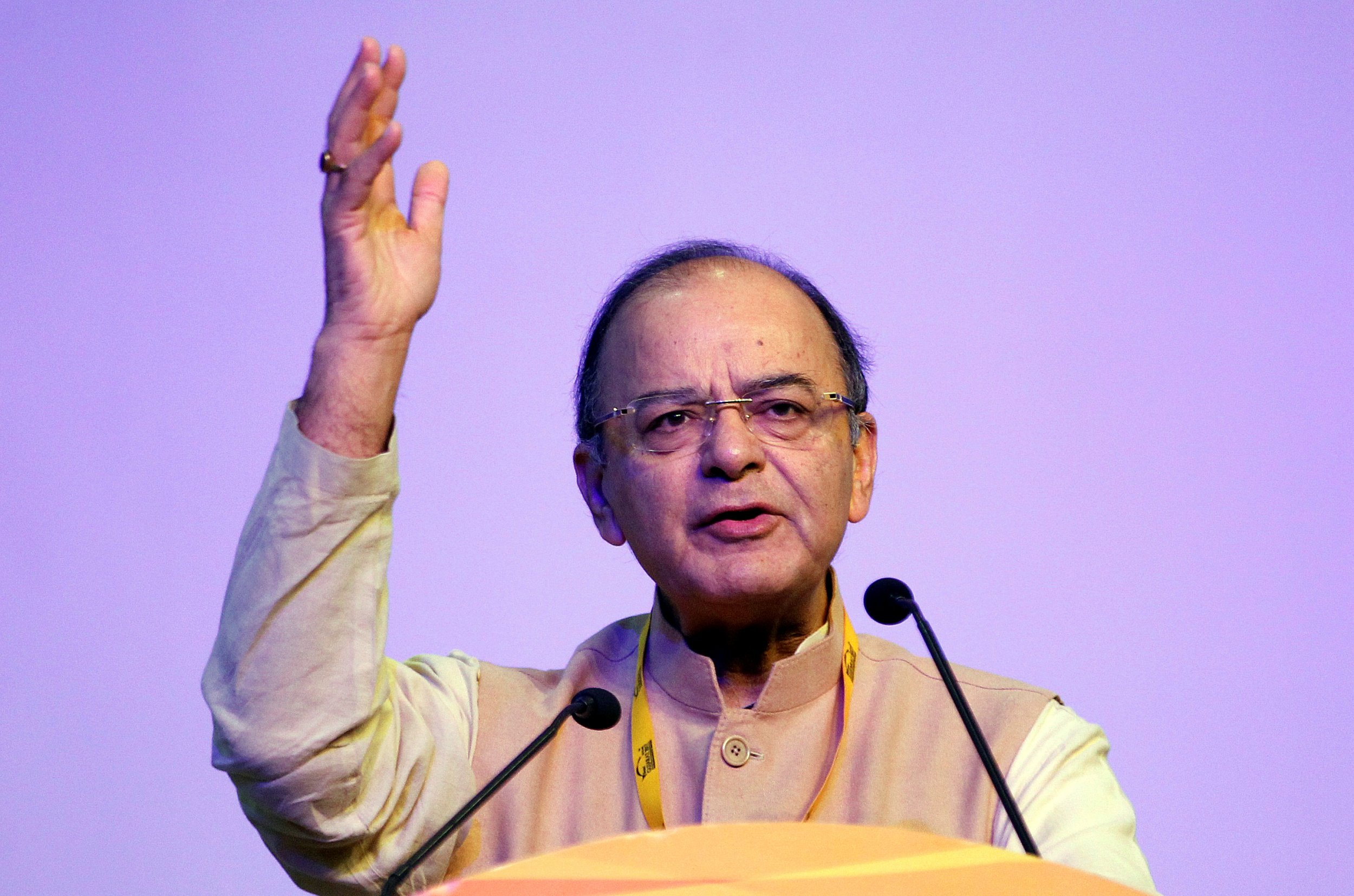
India will ramp up spending on rural areas, infrastructure and fighting poverty, Finance Minister Arun Jaitley said as he unveiled his annual budget on Wednesday, adding the impact on growth from the government's cash crackdown would wear off soon.
Addressing parliament, Jaitley called his fourth budget one for the poor. Yet, while vowing prudent fiscal management, he also raised his 2017/18 federal deficit target to 3.2 percent of gross domestic product to cover his spending promises.
Jaitley called India "an engine of global growth" but highlighted risks to its outlook from likely U.S. interest rate hikes, rising oil prices and signs that globalization is in retreat.
Prime Minister Narendra Modi's surprise decision last November to scrap high-value banknotes worth 86 percent of India's cash in circulation has hit consumer demand, disrupted supply chains and hurt capital investments.
The worst of the cash crunch is now over, however, and Jaitley said he expected it would not spill over into the fiscal year starting on April 1. A private manufacturing survey on Wednesday showed business was slowly returning to normal.
Still, the finance ministry forecasts that growth could dip to as low as 6.5 percent in the current fiscal year to March, before picking up slightly in the coming fiscal year to between 6.75 and 7.5 percent.
That is below the target rate of 8 percent or more that Modi needs to create enough jobs for the 1 million young Indians who enter the workforce in India each month. Half of the population in the nation of 1.3 billion is below the age of 25.
While opinions vary on how long the disruptions caused by Modi's crackdown on untaxed and illicit wealth will last, there is near unanimity among economists that Asia's third-largest economy needs a helping hand.
Jaitley said the government would hike capital investment by 25.4 percent. He also announced a 24 percent hike in rural and farm spending as part of Modi's commitment to double farm incomes over five years.
But there was no extra room in the budget to increase capital support for India's troubled state banks. Jaitley said he would pump in 100 billion rupees ($1.5 billion), in line with earlier plans.
In a surprise announcement, Jaitley said India would abolish the Foreign Investment Promotion Board, a government body, in a move that seeks to cut a layer of bureaucracy and make India an easier place to do business.
"Abolishing the FIPB will further boost foreign direct investment," said Pravin Kumar Agrawal, a tax partner at Deloitte Haskins & Sells.
Modi has vowed to improve the ease of doing business in India, which is ranked a lowly 130th in the World Bank's global rankings.
Economists had expected Jaitley would raise the fiscal deficit from the 3 percent that he had planned earlier—a target he now promised to meet in 2018/19.
"The fiscal deficit bit does not seem very credible. Jaitley is leaving room to exceed it at a later time. I think people will question the fiscal math over the next few days," said Varun Khandelwal, managing director at Bullero Capital in New Delhi.
The deficit for the current year is expected to come in at around 3.5 percent.
Jaitley's fiscal largesse will not only boost consumer spending, but may also shore up the fortunes of Modi's nationalist party in five regional elections for which voting begins on Saturday.
The electoral outcome, particularly in the battleground state of Uttar Pradesh that is home to one in every six Indians, would play a big part in determining whether Modi can win a second term in 2019.
Busting the deficit target, however, will worry ratings agencies at a time when oil prices—India's most costly import—are on an upswing.
Standard & Poor's has already warned that, at 68.5 percent, India's public debt-to-GDP ratio is still too high.
A slowdown in fiscal consolidation would also limit the room for monetary easing. Investors are betting that the Reserve Bank of India would lower its policy rate by another 25 basis points (bps) as early as next Wednesday.
The central bank has cut interest rates by 175 bps since January 2015 to 6.25 percent.
Uncommon Knowledge
Newsweek is committed to challenging conventional wisdom and finding connections in the search for common ground.
Newsweek is committed to challenging conventional wisdom and finding connections in the search for common ground.





